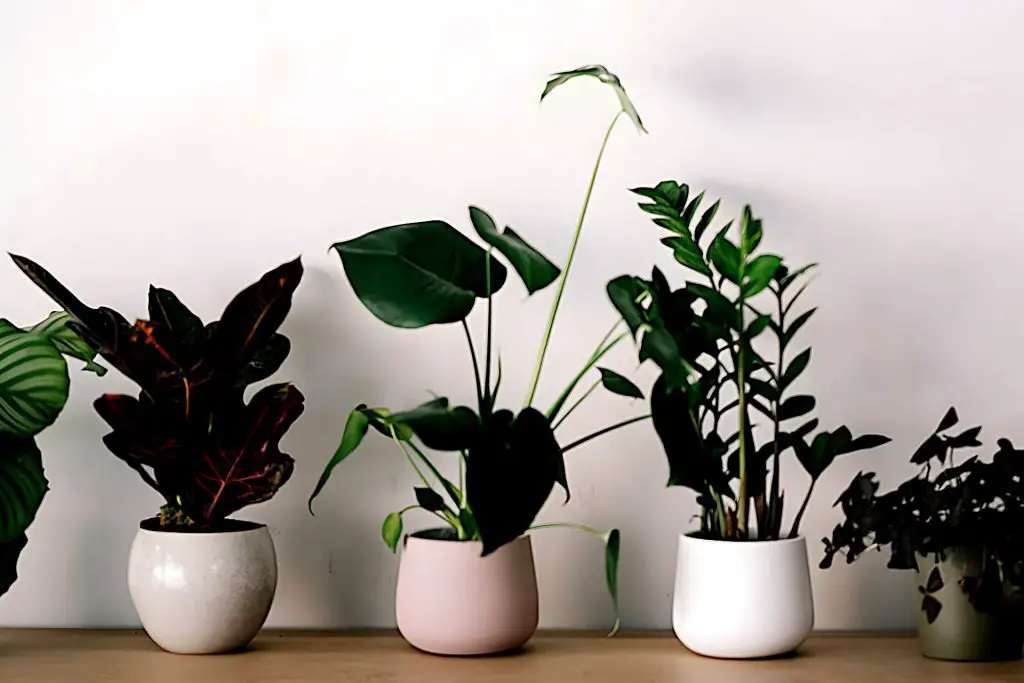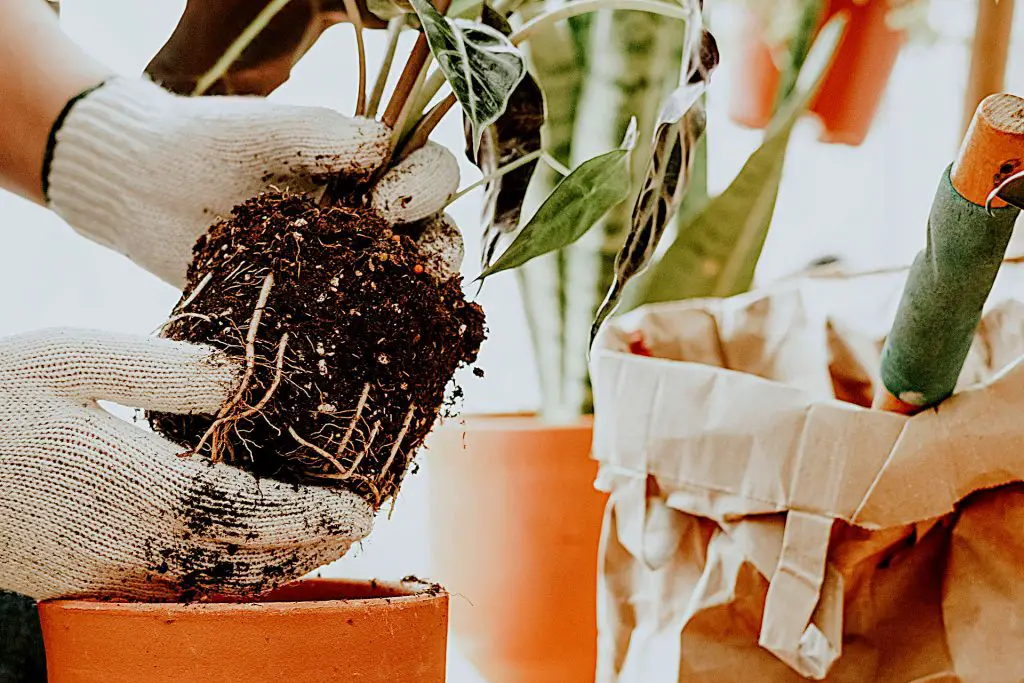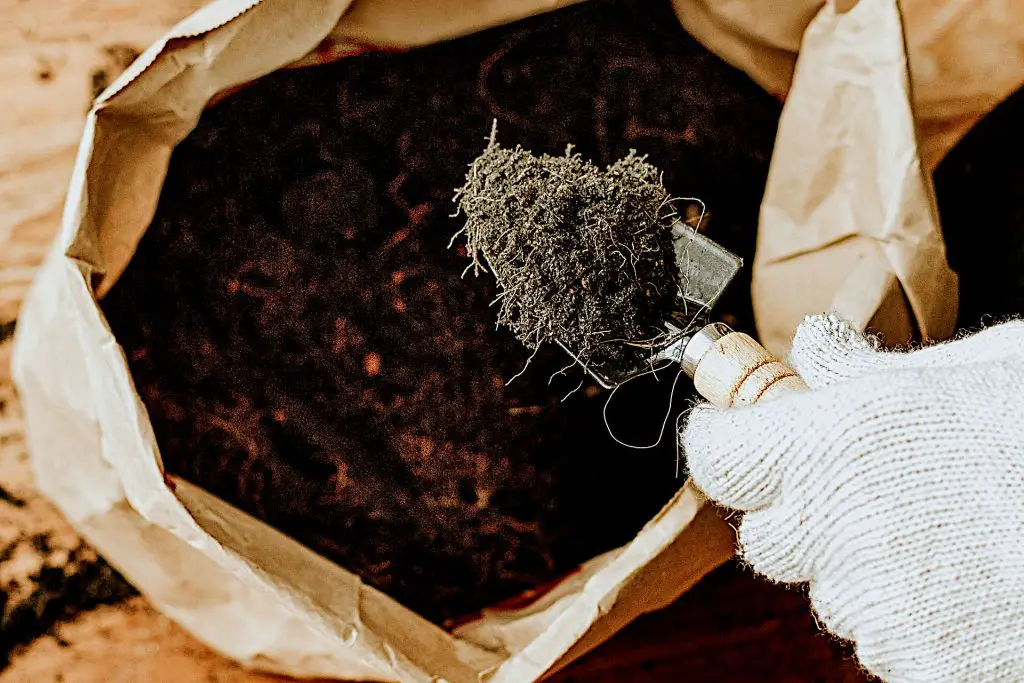Is It Okay to Use Garden soil on Indoor Plants? – The Pitfalls of Potting Indoor Plants with Outdoor Soil
If you are new to caring for indoor plants then it might at first thought seem obvious to use outdoor or garden soil for your planting. This, however, is generally a mistake as often outdoor soil is wrong for potted plants.
There are a number of reasons why it might not be suitable. but the most important is that the nutrients in outdoor soil are very different from those needed in potted plants. It comes down to growing environments in that pots are tight spaces so issues such as nutrient levels and drainage become more important.
Although outdoor or garden soil can be used for indoor plants it is probably not advisable. Using outdoor soil can often be detrimental to the health of your plant, stunting its growth and in some circumstances, the wrong type of soil could contribute to killing it. Of course, much is going to come down to the type and quality of soil you are looking to use, and the plant that it is going to be used for.
Why is Potting Indoor Plants Different from Planting Outside?

When you first start turning your hand to gardening or looking after indoor plants it would on the surface appear logical that garden soil would be okay.
There are two main reasons that you have to use a different planting strategy for potting indoor plants to plant outside and they are environment and space.
By definition, by using a pot you are limiting the space in which the plant’s root structure can grow. This is because the plant only has access to limited resources of water and nutrients available in the growing medium it is potted with. If the plant were planted in the ground outside the roots of the plant can grow and expand, looking for moisture and nutrients from the surrounding area.
Water and moisture also have to have greater consideration. With indoor plants drainage is an important aspect to get right. If the growing medium and pot have inadequate drainage there is nowhere for excess water to escape potentially leading to root rot. Again, if the plant is in the ground, it has a better chance of drainage as water has a vast area to run off.
As we shall see in the next section outdoor soil from your backyard can have properties that exacerbate some of the problems that come with growing in pots.
Internal environmental conditions
A further aspect of growing plants indoors is the prevailing environmental conditions, air temperature, light, and humidity, which will be different from outside. Air temperature and humidity can affect the soil in various ways but the primary concern is the soil’s moisture content.
In a warm dry atmosphere, moisture can be drawn from the soil so your growing medium would need to have good water retention capabilities, whilst still having adequate drainage.
Mediums such as mushroom compost are great for this whereas soil can dry out too quickly or become oversaturated as you try to compensate.
Properties of Gardening Soil That Makes it Problematic for Potting Indoor Plants

When it comes to using soil for plants, there are a few things to consider. Outdoor soil is typically heavier than potting soil,
Being heavier using outdoor soil in pots can result in excess water retention. This can lead to root rot in indoor plants, as the excess water will not be able to drain properly. Outdoor soil is also less aerated than potting soil, meaning that it doesn’t provide the same level of oxygenation that makes it more difficult for the plants’ roots to get the oxygen they need. Additionally, outdoor soil often lacks vermiculite, which is beneficial for plant growth.
Outdoor Gardening Soil and Problems with Aeration
If you’re like most people, you probably think of soil as a dirty, brown substance. But what many people don’t know is that soil is actually a living organism. Just like your body needs oxygen to function, so does the soil. And just like your body needs food to get energy, so does the soil.
One of the things that helps the soil to breathe is aeration. When the soil is well aerated, it means that there are plenty of air spaces in between the dirt particles. This allows for good circulation of air and water, which helps to keep the soil healthy.
But when the soil isn’t well-aerated, aerobic respiration struggles to take place. Aerobic respiration is crucial as it provides the plant the means to break down complex sugars from photosynthesis to get the energy to live. The plant can’t do this if it’s depleted of energy, it stagnates. Without adequate aeration, the plant can’t get the energy it needs from the soil. In addition lack of aeration also makes it difficult for water to circulate, which can lead to problems such as drought, no water getting through to the roots, or more commonly, root rot, where the roots sit in saturated soil.
Bad Soil Structure Can Damage Your Indoor Plants

If you’re growing plants in pots, or even in your garden, and you find that the leaves are starting to turn yellow and the plants aren’t growing very well, then the chances are that you have a problem with your soil structure.
The main problem with poor soil structure is that it can lead to drainage issues. If the water can’t drain away properly, then the soil will become waterlogged, which will stop the roots from getting enough air. This can cause the plants to die from suffocation.
In addition, poorly structured soil is often low in nutrients and organic matter. This can limit the plant’s ability to take up essential minerals and vitamins, leading to deficiencies.
There are different types of soil structures, depending on how much clay, silt, or sand is present.
Soil structure is the arrangement of soil particles into aggregates. These aggregates’ size, shape, and stability determine how well soils drain, how easily they are tilled, and how much air and water they hold. Soil structure is largely determined by the type and amount of organic material in the soil.
Clay soils have small, flat, plate-like particles that stick together. This makes them dense, prone to soil compaction, and difficult to work on. Clay soils also form tight clumps that do not allow water or air to penetrate easily. As a result, clay soils are slow to drain and can be waterlogged for long periods of time. They also can prevent access to nutrients because plant roots cannot penetrate the small soil pores.
Silt soils have smaller, rounder particles than clay soils. They also have a high proportion of air spaces between the particles. In comparison, clay soils have more water-holding capacity and soil structure than silt soils. The higher water content in silt soils makes them easier to work and the plant’s root system has an easier job of penetrating deeper.
Outdoor Soil Can Be Nutritionally Poor
Soil can be nutritionally deficient for plants. This is especially true for houseplants, which may require different nutrients than what is found in most soils. Without the right nutrients, a plant may stunt its growth or stop growing altogether. Its roots may also become stunted.
The most common nutrients to look for in soil are nitrogen (N), phosphorus (P), and potassium (K). But there are other important nutrients such as zinc, copper, boron, manganese iron, and calcium, among others, that different plant species require in differing quantities in order for them to thrive.
It’s important to do your research to determine what type of houseplant you have, and then find out what specific nutrients it needs. The best way to determine what nutrients are missing in the soil is by testing the soil with a nutrient test kit.
A soil’s pH level is important to consider, especially for many houseplants. Soils with high pH levels are alkaline and can burn houseplants. Again, a soil test kit is the best way to monitor soil pH levels.
This is why specialist potting mixes or alternative growth mediums such as LECA are often used when potting houseplants. You can buy special soil mixes for houseplants that are specifically tailored to meet their needs, or you can add specific nutrients to the soil or other growing medium yourself.
Pathogens and Fungus
One of the biggest problems with using garden or outdoor soil to pot indoor plants is the possible spread of pathogens, weed spores, and fungi.
Being in the open air, soil from your garden or yard has the propensity to contain many pathogens. The soil from your lawn or garden may be contaminated with weed seeds, and weeds can quickly spread to the potting soil. This is one reason why potting mixes and other growing mediums are sterilized for use with indoor houseplants.
Alternatives to Using Garden Soil to Pot Your Indoor Plants
There are several alternatives that you can use instead of using backyard soil to pot your plants. These range from various types of potting mix through to alternative growing solutions such as semi-hydroponics.
Potting Mix

Probably the most obvious alternative to use is a soilless potting mix. Potting mix is a mixture of a variety of ingredients that are designed to be used with indoor plants. It is made of different materials such as peat moss, perlite, and vermiculite. These are substances that have been chosen to make the soil light and fluffy. They also provide aeration and drainage. Potting mixes are sterilized to prevent the potting soil from becoming contaminated with bacteria and fungi.
There are various types of potting mix that are formulated with specific nutrients to grow specific plants. The most common types are: Culture mix- This is a mixture of pine bark, perlite, vermiculite, and peat moss. This potting soil is designed for growing houseplants, cacti, and succulents.
Another alternative that you can use is dolomite lime. It is a type of limestone that is used as a fertilizer for trees and plants. It helps to remove calcium and magnesium from the soil. The next type of mix is called “coconut coir”. It is a coconut husk material that is used as an alternative to peat moss. The last type of mix is called perlite. This medium is used to increase the drainage of the soil. It can also be combined with other types of potting mixes.
One thing to note with potting mixes is the nutrient content. The sterilization process reduces the nutrients in the medium. It is important to read the ingredient list to determine the nutrient levels of the potting mix. If it doesn’t contain enhanced nutrients then you will need to add more nutrients after a few weeks, using fertilizer. Water-soluble organic fertilizers are better than synthetic fertilizers.
Mushroom Compost
Generally speaking, it is not advisable to use organic compost either bought or homemade with your house plants. This is because as with outdoor soil there is a chance that pathogens or weed spores could be transferred to the pot.
There are exceptions to this, one of them being mushroom compost. Mushroom compost, produced from the special compost that mushrooms are grown in, is sterilized. The downside of mushroom compost is that it has a high alkaline content and there are many plants that struggle with elevated pH levels. It is usually not advised for seeds or young plants but can be a good medium for mature plants.
Alternative Growing Mediums and Systems
There are alternative growing solutions such as using semi-hydroponic systems. One of the most common is LECA (hydroton) balls. These small clay balls can be combined with, or do away completely with dirt-based growing mediums. You can read more about them here.
Summary: Is Garden Soil Safe for Your Indoor Plants?
Whilst digging up some soil from the backyard, your garden, or anywhere else outside might seem obvious, as we have seen, it comes with significant caveats as to the future health of your plant. If the outdoor soil you dig up, lacks nutrients and/or is too compact to allow soil aeration so that the plant roots can’t get enough air, then the plant won’t be able to take in enough oxygen to complete the aerobic respiration process, and will eventually die.
This is just one problem. Many clay soils suffer from poor drainage. There is also the possibility of weed spores, fungi, and pathogens that could be present in the soil that will eventually contaminate the pot and harm the growth prospects of the plant.
In truth, indoor plants are likely to thrive where the growing medium is formulated to have nutrient retention and water retention capabilities while also having good drainage. Therefore, growing mediums such as a specific potting mix suited to the type of plant work best. There are also alternative mediums such as LECA balls, using a semi-hydroponic growing environment that can also produce better results and are safer than using garden soil.
